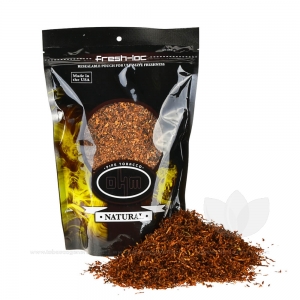

Sep Purif Technol 52:403–415.CN101085677A - Bamboo charcoal activation producing process Yin CY, Kheireddine Aroua M, Daud WMAW (2007) Review of modifications of activated carbon for enhancing contaminant uptakes from aqueous solutions. Wang R, Amano Y, Machida M (2013) Pyrolysis surface properties and water vapor adsorption–desorption characteristics of bamboo-based activated carbon. Vladimir Strelko J, Malik DJ (2002) Characterization and metal sorptive properties of oxidized active carbon.

Striolo A, Naicker PK, Chialvo AA et al (2005) Simulated water adsorption isotherms in hydrophilic and hydrophobic cylindrical nanopores. Shen W, Li Z, Liu Y (2008) Surface chemical functional groups modification of porous carbon. Sato S, Yoshihara K, Moriyama K et al (2007) Influence of activated carbon surface acidity on adsorption of heavy metal ions and aromatics from aqueous solution. Santiago M, Stuber F, Fortuny A et al (2005) Modified activated carbons for catalytic wet air oxidation of phenol. Sakuma M, Amano Y, Machida M (2012) Water vapor adsorption-desorption properties of bamboo charcoals prepared by air oxidation following low temperature carbonization. Rivera-utrilla J, Sánchez-polo M, Gómez-serrano V (2011) Activated carbon modifications to enhance its water treatment applications: an overview. Pietrowski P, Ludwiczak I, Tyczkowski J (2012) Activated carbons modified by Ar and CO 2 plasmas-acetone and cyclohexane adsorption. Ohba T, Kanoh H, Kaneko K (2004) Affinity transformation from hydrophilicity to hydrophobicity of water molecules on the basis of adsorption of water in graphitic nanopores. Ohba T, Kaneko K (2007) Surface oxygen-dependent water cluster growth in carbon nanospaces with GCMC simulation-aided in situ SAXS. Moreno-Castilla C, Ferro-García MA, Joly JP et al (1995) Activated carbon surface modification by nitric acid, hydrogen peroxide, and ammonium peroxydisulfate treatments. Monser L, Adhoum N (2002) Modified activated carbon for the removal of copper, zinc, chromium and cyanide from wastewater. Lee BJ, Kim J, Hyeon T (2006) Recent progress in the synthesis of porous carbon materials. Kawano T, Kubota M, Onyango MS (2008) Preparation of activated carbon from petroleum coke by KOH chemical activation for adsorption heat pump. Jia YF, Thomas KM (2000) Adsorption of cadmium ions on oxygen surface sites in activated carbon. Horikawa T, Kitakaze Y, Sekida T, Katoh M (2010) Characteristics and humidity control capacity of activated carbon from bamboo. Garciaa AB, Martinez-alonsoa A, Tascna JMD, Leon CA (1998) Modification of the surface properties of an activated carbon by oxygen plasma treatment. Carbon N Y 38:767–773Įl-Hendawy AA (2003) Influence of HNO 3 oxidation on the structure and adsorptive properties of corncob-based activated carbon. ĭo DD, Do HD (2000) A model for water adsorption in activated carbon. Carbon N Y 35:801–807ĭias JM, Alvim-Ferraz MCM, Almeida MF et al (2007) Waste materials for activated carbon preparation and its use in aqueous-phase treatment : a review. ĭelamar M, Desarmot G, Fagebaume O et al (1997) Modification of carbon fiber surfaces by electrochemical reduction of aryl diazonium salts: application to carbon epoxy composites. Fuel Process Technol 79:265–271Ĭhingombe P, Saha B, Wakeman RJ (2005) Surface modification and characterisation of a coal-based activated carbon. Carbon N Y 37:1989–1997Īnia CO, Parra JB, Pis JJ (2002) Influence of oxygen-containing functional groups on active carbon adsorption of selected organic compounds. Whereas, at low relative humidity, surface functional groups on BC are a dominant factor compared to specific surface area on humidity adsorption.Īggarwal D, Goyal M, Bansal RC (1999) Adsorption of chromium by activated carbon from aqueous solution. The humidity adsorption tests show that the modified BC samples with HNO 3 at room temperature (about 22 ☌) in pyrolysis temperature (400–500 ☌) have a significant enhancement than the control one at lower relative humidity ( 60%). The physical and chemical properties of the samples were studied by scanning electron microscope, Brunauer–Emmett–Teller surface area analysis, Fourier transform infrared spectroscopy and X-ray photoelectron spectroscopy. The adsorption experiments were conducted follows to Japanese industrial standard JIS A 02. The bamboo charcoals (BC) in various range pyrolysis (400–900 ☌) were modified by HNO 3, and then the samples were tested for water vapor adsorption.


 0 kommentar(er)
0 kommentar(er)
